FAQ
General
What should I put in my hummingbird feeder?
Mix four parts hot water to one part white sugar, boil for one to two minutes.
Mix ratios are as follows:
- Using a 12 oz bottle: 1/3 cup of sugar in 12 ounces of water
- Using a 16 oz bottle: 1/2 cup of sugar in 16 ounces of water
- Using a 20 oz bottle: 2/3 cup of sugar in 20 ounces of water
- After the mixture has cooled fill your bottle with the sugar water.
Is it okay to use artificial sweetener or honey when making sugar water?
No! When making sugar water, use only granulated sugar – no substitutes, and definitely no honey or any other kinds of sweeteners.
Should I put red coloring in the nectar solution?
No, red coloring is not necessary and the reddening chemicals could prove to be harmful to the birds. We have made our feeders with an attractive colorful bottle hanger so there is no need to add any dangerous dyes.
How often should I clean my feeder?
Whether you are making your own nectar or not, during the hot summer months, the feeder should be cleaned more often than during the cooler months to avoid spoilage, mold and bacterial growth. Preferably twice per week when it's hot and once a week in cooler weather. For the most part, when the hummingbirds empty the feeder just clean before you fill with new nectar. Unscrew the base from the bottle, then give the top of the base a turn counter clockwise, and separate top from bottom. Wash with warm soapy water and rinse, and make sure not to leave any soap residue behind.
Are hummingbirds attracted to red-colored things?
Yes, hummingbirds are attracted to red, as well as other brightly colored objects, because they have learned to associate high-quality nectar with red flowers. That's what sets our feeder with its attractive eye catching colorful bottle hangers apart from others. Furthermore the neoprene bottle hanger also protects the nectar from UV rays.
Where should I hang my feeder?
Since hummingbirds are accustomed to getting nectar out of flowers, near a garden where the birds can easily find the feeder would be an ideal starting point. The feeder needs to be where you can see it, enjoy it, and get easy access for filling and cleaning.
Should the feeder be places in a shady area?
Our bottle hanger is made of 100% neoprene material so it will protect the nectar from any harmful UV rays. However, feeders should be places out of direct sunlight to slow the fermentation/spoilage process of the nectar.
What are the feeder dimensions?
The base part is approximately 5 1/2" in diameter and 3/4" thick. It screws onto a standard 12, 16, or 20 ounce plastic bottle and the sleeve wraps nice and snug around the bottle.
Our feeder is made of PP 390Y polypropylene, a HDPE plastic. It doesn't deteriorate or form mold caused by fungi or bacteria. It has a high melting point which makes it dish washer safe, and it is entirely recyclable. HDPE plastics are completely free from BPA and are therefore safe for applications that directly impact humans.
